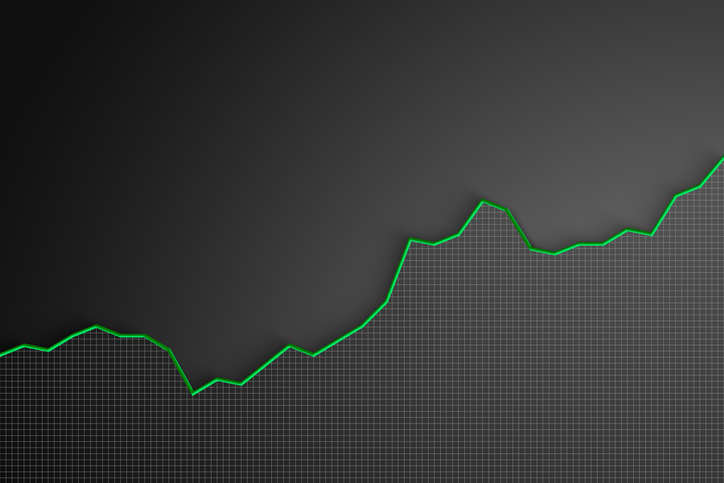Lower Food Prices Hit Farmers, Help Grocers
Next year will tell a similar tale, though look for grocery store prices to edge up by year-end.

The drop in food prices is hitting farmers a lot harder than grocery stores. The grocers have lowered prices 2% on average from a year ago. But margins on raw farm products are rising, leaving farmers with smaller shares of the consumer dollar.
Farm prices are down much further—by more than a third for milk, 20% for livestock and 17% for crops. Of course, 2007 and 2008 were boom years on the farm—crop and livestock prices rose nearly 30% in that period. In fact, the average farm price of milk was breaking records at around $22/cwt. two years ago, but has been selling in the $12 to $13 range so far this year.
Farmers ramped up crop and livestock output for years to keep up with rising demand both at home and abroad. But demand eroded quickly as the recession, which began in December 2007, set in last year. Agricultural exports, for example, are down 21% so far in 2009. And domestically, there’s now an overabundance of commodities. No surprise, then, that the U.S. Department of Agriculture’s (USDA) September price index for all crops is down 18% from a year ago.

Sign up for Kiplinger’s Free E-Newsletters
Profit and prosper with the best of expert advice on investing, taxes, retirement, personal finance and more - straight to your e-mail.
Profit and prosper with the best of expert advice - straight to your e-mail.
Complicating the lower prices received by farmers: Costs of supplies haven’t receded as much overall. Sure, some things are cheaper. The price farmers paid for fuel, for example, was 34% lower in September than a year earlier. But the price index for all farm expenses remains 16% higher than it was in September 2007. And that trend continues to gnaw at farmers’ bottom lines. With overall cash receipts down $40 billion and 2009 operating costs down $10 billion, farmers’ net cash income will be down by 30% this year.
Ag department economists say farmers’ overall share of the retail food dollar, 23% a year ago, has now slipped below 20%. Current trends will keep it there into next year.
While farmers were enjoying heady times in 2007 and 2008, grocery stores and restaurants were being squeezed hard. Now they’re trying to recoup a bit of what they lost.
The modest 2% drop in grocery store prices in recent months stands in stark contrast to the plunging raw commodity prices, and the lower costs that grocers are paying for transportation, energy and labor.
Note that supermarket sales volume hasn’t fallen much, if at all. Shoppers tend to cut back on grocery spending by making cheaper selections rather than buying less food. William Greer, spokesman for the grocers’ Food Marketing Institute, points out that part of the shift is driven by the supermarkets themselves: They’re greatly expanding promotion and shelf space for company labeled items, typically at a significant discount to major brands.
But while grocers are playing catch-up now, next year promises to be different. USDA projects that average annual grocery prices in 2010 versus this year will have gone up around 3% by year-end.
Meanwhile, restaurants and other eateries are actually raising prices—by 3% overall so far this year versus a year ago. Fast food outlets are up the most—3.7%. USDA projects about 4% in 2010, compared with this year. Budget shortfalls are forcing school, government and business cafeterias to limit subsidies, pushing prices higher there as well.
For weekly updates on topics to improve your business decisionmaking, click here.
Get Kiplinger Today newsletter — free
Profit and prosper with the best of Kiplinger's advice on investing, taxes, retirement, personal finance and much more. Delivered daily. Enter your email in the box and click Sign Me Up.

-
 Stock Market Today: Stocks Soar on China Trade Talk Hopes
Stock Market Today: Stocks Soar on China Trade Talk HopesTreasury Secretary Bessent said current U.S.-China trade relations are unsustainable and signaled hopes for negotiations.
By Karee Venema
-
 2026 Disney Dining Plan Returns: Free Dining for Kids & Resort Benefits
2026 Disney Dining Plan Returns: Free Dining for Kids & Resort BenefitsPlan your 2026 Walt Disney World vacation now. Learn about the returning Disney Dining Plan, how kids aged three to nine eat free, and the exclusive benefits of staying at a Disney Resort hotel.
By Carla Ayers
-
 The Economic Impact of the US-China Trade War
The Economic Impact of the US-China Trade WarThe Letter The US-China trade war will impact US consumers and business. The decoupling process could be messy.
By David Payne
-
 AI Heads to Washington
AI Heads to WashingtonThe Kiplinger Letter There’s big opportunity for AI tools that analyze MRIs and other medical images. But also big challenges that clinicians and companies will have to overcome.
By John Miley
-
 The AI Doctor Coming to Read Your Test Results
The AI Doctor Coming to Read Your Test ResultsThe Kiplinger Letter There’s big opportunity for AI tools that analyze CAT scans, MRIs and other medical images. But there are also big challenges that human clinicians and tech companies will have to overcome.
By John Miley
-
 The New Space Age Takes Off
The New Space Age Takes OffThe Kiplinger Letter From fast broadband to SOS texting, space has never been more embedded in peoples’ lives. The future is even more exciting for rockets, satellites and emerging space tech.
By John Miley
-
 Rising AI Demand Stokes Undersea Investments
Rising AI Demand Stokes Undersea InvestmentsThe Kiplinger Letter As demand soars for AI, there’s a need to transport huge amounts of data across oceans. Tech giants have big plans for new submarine cables, including the longest ever.
By John Miley
-
 What DOGE is Doing Now
What DOGE is Doing NowThe Kiplinger Letter As Musk's DOGE pursues its ambitious agenda, uncertainty and legal challenges are mounting — causing frustration for Trump.
By Matthew Housiaux
-
 A Move Away From Free Trade
A Move Away From Free TradeThe Letter President Trump says long-term gain will be worth short-term pain, but the pain could be significant this year.
By David Payne
-
 The Explosion of New AI Tools
The Explosion of New AI ToolsThe Kiplinger Letter Workers and consumers soon won’t be able to escape generative AI. Does that mean societal disruption and productivity gains are right around the corner?
By John Miley